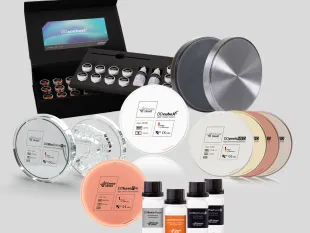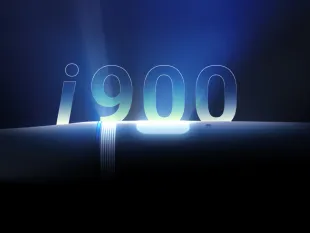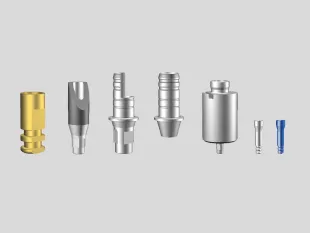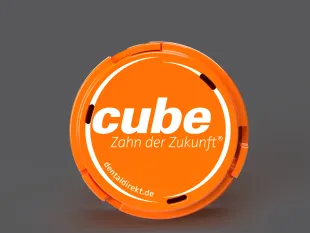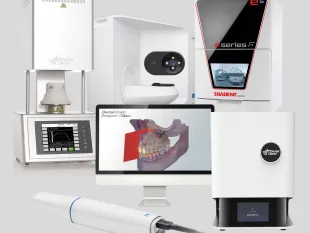Regardless of how stable or functional a material may be, the patient may still reject the finished restoration because it does not correspond to the color of his choice or cannot be inconspicuously integrated into his row of teeth.
A pilot study from 2013 showed that erroneous tooth shade determinations and associated color corrections on dentures for dental laboratories result in additional annual costs in the multi-digit million range, not to mention the additional time that is not only a burden for the dental technician, but also for the dentist and patient
(Source: Hassel, Alexander, Pilotuntersuchung: Fehler bei der Farbnahme kosten Zeit und Geld. ZMK aktuell, 08.03.2013; online: https://www.zmk-aktuell.de/fachgebiete/allgemeine-zahnheilkunde/story/p…).
VITA tooth shades and their reproducibility
The tooth units on the VITA classical A1-D4 ® shade guide for tooth shade determination are layered - like the natural tooth itself. This circumstance makes the reproducibility of the VITA shades difficult, since the shade effect is significantly influenced by the respective layering. Especially for monolithic and monochrome zirconium oxide works, this results in a problem to meet the VITA standard without deviation.
Our solution: Make your own DD Shade Guide
-
1. Subjectivity of color perception
-
2. Tooth morphology
-
3. Transmission of information
-
4. The sintering and the sintering furnace
From a physical and scientific point of view, color is nothing more than a subjective perception that arises when certain electromagnetic waves hit our eyes. This means that the colors as we perceive them are not objective properties of a consciousness-independent reality. There is always a possible source of an error in the color determination in this subjective element.
The tooth color or the perception of the tooth color is the result of an interplay between the incident light and the morphology of the tooth. A tooth is built up in different layers so that some parts of the incident light are scattered or reflected on the tooth surface and others are absorbed inside the tooth. The aesthetic success of a restoration is therefore not only dependent on the correct shade determination, but also on the correct layering of the tooth and the design of its shape and surface.
The third problem concerns communication. It is often dental technician A who determines the shade and dental technician B who veneers the restoration. So what A has determined must be communicated and transmitted in such a way that B can access and implement the information in an unadulterated manner. It is therefore not only a question of a correct color determination, but also of precise communication between the person who determines the color and the person who blinds the restoration.
Sintering or the sintering furnace plays a decisive role when it comes to the color accuracy of the restoration and the reproducibility of the color effect.
Make an individual shade guide that is tailored to the zirconium oxides used and your own workflow. In this way, the tooth shade is determined directly with the respective supply material. This ensures a much better expectation regarding the color effect and better reproducibility and thus minimizes the risk of a prosthetic failure due to an incorrect shade.
